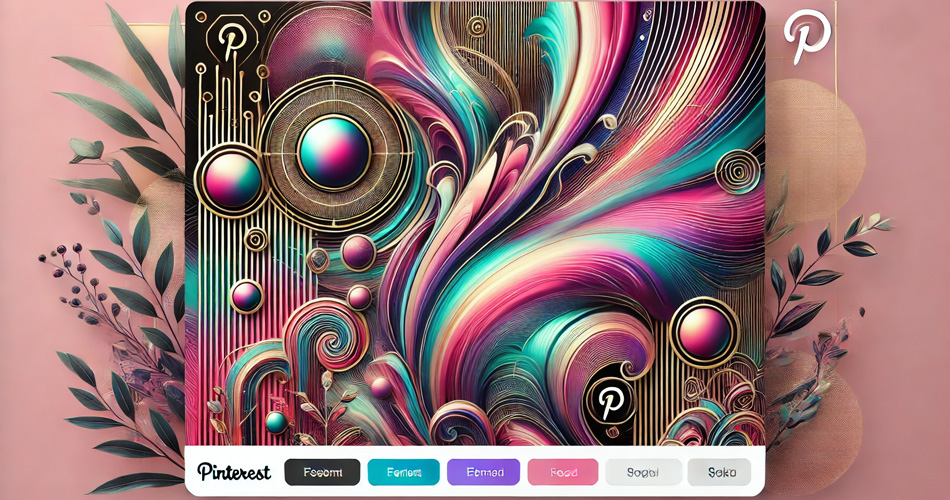Creating Stunning Social Media Graphics That Get Noticed
Friday, March 21st, 2025

In a world where our phones are always within reach, creating eye-catching visuals is more important than ever. With so much content on our feeds, it’s easy for posts to get lost. That’s why it pays to invest some extra time and effort into making sure your graphics stand out. Whether you’re designing pins for Pinterest, Instagram posts, or Facebook ads, you want your audience to pause, admire, and tap that coveted “like” or “share” button. In addition, high-quality visuals are a key element of social media marketing—especially for those looking to connect with and engage their audience on these highly visual platforms. Ready to start designing?
Understanding the Power of Visual Content
Visual content is often the first thing people notice when they scroll through their feed. Before anyone reads your caption or clicks your link, your design speaks for you. Humans are visual creatures, which is why well-crafted images can be the difference between someone engaging with your post or scrolling right by.
- First impressions matter: Think of your graphics like a storefront window. If it’s appealing and eye-catching, people are much more likely to step inside, learn more, and eventually convert into followers or customers.
- Emotional connection: Colors, shapes, and imagery all evoke an emotional response. This can be incredibly powerful—your graphics can instantly create a mood that aligns with your brand or message.
- Enhanced shareability: Posts with stunning visuals are more likely to be saved, pinned, and shared—especially on platforms like Pinterest. If your followers love what they see, they’ll happily pass it on.
Simply put, amazing visuals grab attention, communicate your message quickly, and encourage interaction. Embrace this power if you want to make a memorable impact online.
Choosing the Right Design Tools
You don’t need a fancy design degree or expensive software to create gorgeous graphics—there are plenty of user-friendly tools out there, many of which are free or low-cost. Here are a few popular options to consider:
- Canva: If you’re just starting out, Canva is an excellent choice. With a large selection of pre-made templates and an intuitive drag-and-drop interface, you can quickly customize layouts to match your style and brand.
- Adobe Express: Formerly Adobe Spark, this tool offers templates and design features aimed at making content creation simpler. If you’re familiar with Adobe products, you’ll find it especially easy to navigate.
- Visme: Great for infographics, presentations, and dynamic social media visuals. Visme provides lots of interactive elements if you want to experiment with clickable graphics.
Whichever tool you choose, spend some time exploring the features. Don’t be afraid to play around with fonts, shapes, and colors. Creativity is about experimentation, so go ahead—tinker until you find something that feels uniquely you.
Mastering Color and Typography
When it comes to design, color and typography are two of your most powerful tools. If chosen correctly, they help people immediately recognize your brand and understand your message. Here’s how to make them work for you:
- Create a color palette: Select three to five main colors you’ll use consistently in your graphics. Think about the mood you want to convey. Soft pastel tones can give a calm and feminine vibe, while bright neons are energetic and bold. Pinterest users tend to be drawn to aesthetically pleasing color combinations, so pay close attention to cohesion.
- Balance and contrast: Make sure your main color doesn’t clash with your text. You need enough contrast so readers don’t have to squint or strain their eyes. A quick trick: Use a dark color for text if your background is light, and a light text if your background is darker.
- Choose typography that fits your brand: There’s a font for every personality—from chic scripts to blocky bold statements. But consistency is key. Too many fonts on one graphic can look messy, so try to stick with one or two.
Well-chosen colors and fonts make your content scroll-stoppingly beautiful. With a few mindful tweaks, you’ll watch your designs go from average to awesome in no time.
Composition and Layout Tips
Composition is all about how elements are arranged in your graphic. Think of it as arranging furniture in your living room—you want to make sure everything looks harmonious and there’s plenty of space to move around. Here are some layout tips:
- Use the rule of thirds: Imagine your design divided into three rows and three columns. Place important elements (like text or a focal image) along those lines or intersections. This makes your graphic feel naturally balanced.
- Leave breathing room: Negative space (also known as white space) is your friend! Crowding too many elements into one design makes it hard for people to find what’s important. Give your text and images room to breathe.
- Guide the eye: If you have multiple elements, use lines, arrows, or shapes to direct attention. For instance, a bold heading at the top might lead the eye to a smaller subheading below, and eventually to a call-to-action button.
When in doubt, trust your instincts. If your design feels cluttered, it probably is. Simplify until the main message shines through.
Using Authentic Imagery
The images you choose can tell a story all on their own. Whether you’re using stock photos or your own shots, authenticity goes a long way in connecting with your audience. Remember, Pinterest is full of gorgeous, aspirational images, so try to match that high standard with visuals that reflect your brand’s personality.

- Invest in quality: If you rely on stock photos, explore paid stock image sites. Free sites are great, but often overused. Paid options can give you more unique and polished images.
- Show real people: Photos that include people—especially those who resemble your target audience—tend to perform well. People like to see themselves represented.
- Inject personality: If you have the ability to take your own photos or work with a local photographer, do it! Unique photos that capture your personal or brand style help set you apart from competitors.
Remember, each photo is a window into your world. Let your audience step inside, see your values, and get to know you better.
Consistent Branding Made Simple
Brand consistency is crucial for building trust and recognition. It’s not just about having a logo—it’s about repeating certain colors, fonts, and design elements in all your social media graphics so followers know instantly that it’s you.
- Create a style guide: List your official colors (with hex codes), fonts, logos, and any extra design features you regularly use. Keep this guide accessible whenever you design new content.
- Templates are your friend: Save time by creating reusable templates. For instance, you might have a Pinterest Pin template, an Instagram Story template, and a Facebook Post template, each matching your overall style.
- Stay flexible: While consistency is key, don’t be afraid to update your style guide now and then if your brand’s direction evolves. The goal is to stay on-brand but not feel stuck in a style that no longer fits you.
Consistency might feel repetitive at first, but it’s exactly what helps your audience recognize you among the sea of content on every platform.
Pinpoint your target audience accurately—buy specialized web traffic for better conversion odds.
Final Touches and Posting Strategies
Once you’ve created a design you love, it’s time to polish and share it. Here’s how to make sure your visuals make a splash:

- Review your text: Double-check for typos or grammatical errors. Consider your word choice—Pinterest users often prefer descriptive, creative language that speaks to their interests.
- Optimize file sizes: Large file sizes can slow your site load times and discourage quick sharing. Compress images where possible without losing too much quality.
- Track performance: Pay attention to which visuals get the most pins, likes, comments, or shares. Over time, you’ll notice patterns in color, layout, or messaging that resonate best with your audience.
- Cross-post wisely: Don’t be afraid to share your fabulous designs on other platforms. Social platforms have different audiences, so adapting your content can expand your reach.
Remember, in social media marketing, quality is only part of the equation. Strategy matters, too. Post at times when your audience is most active, and pair your visuals with compelling captions, calls to action, or relevant hashtags for maximum engagement. Every design you share is an opportunity to tell a story, evoke a feeling, or spark a conversation. Keep experimenting, track your results, and refine your approach until you develop your winning formula.
You’ve now got everything you need to start wowing your audience with visuals that truly pop off the screen. By applying the tips above, you’ll see more engagement and drive better results through social media marketing. Don’t be afraid to learn along the way and have fun experimenting with new styles—sometimes a fresh, unexpected approach can yield surprising (and awesome) results.
Filed under: Tips & Tricks
Tags: social media marketing
Exclusive Offer!
1,500,000 Points for $110 $68. If you're running low on points — don't miss out
limited time